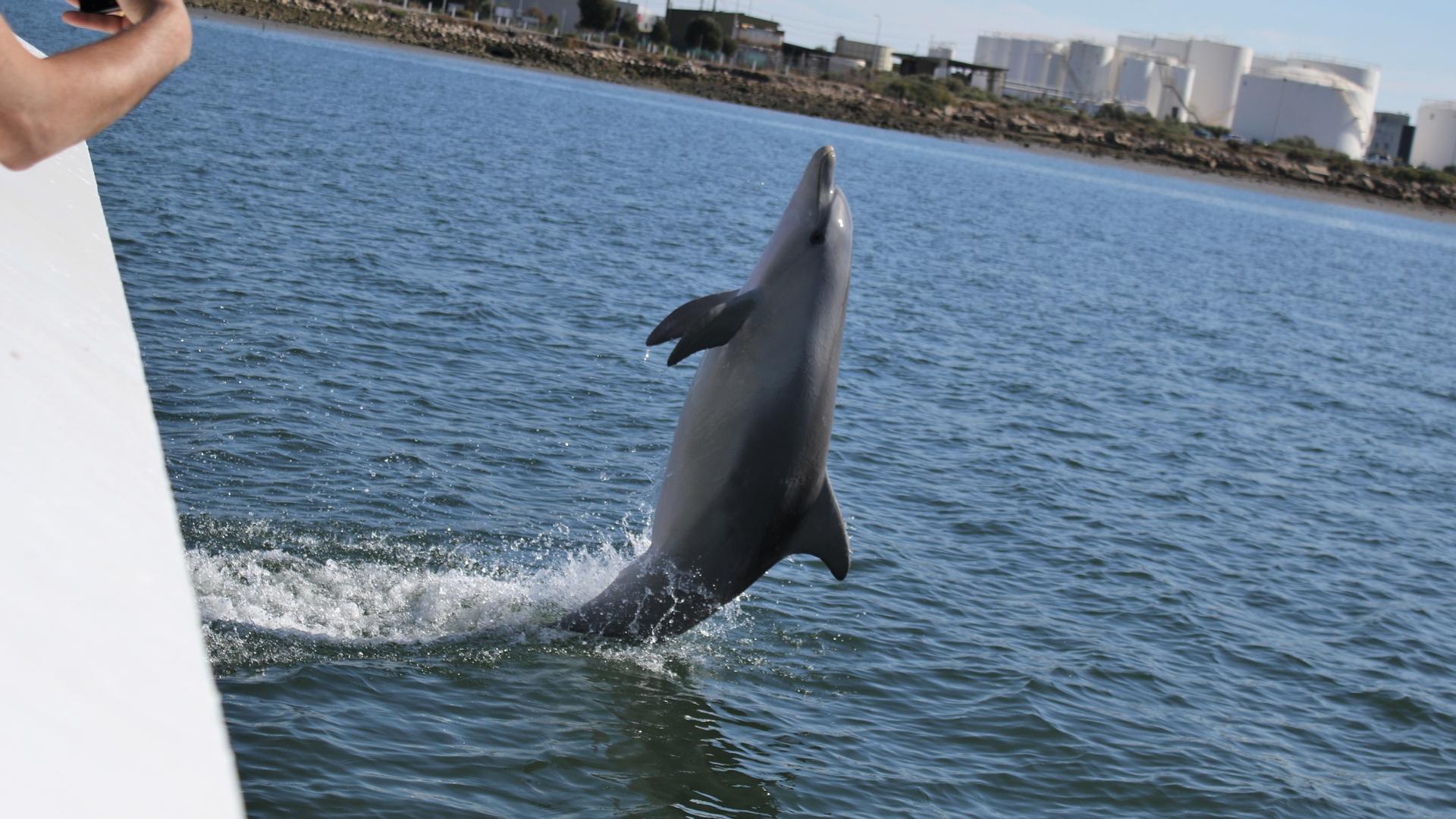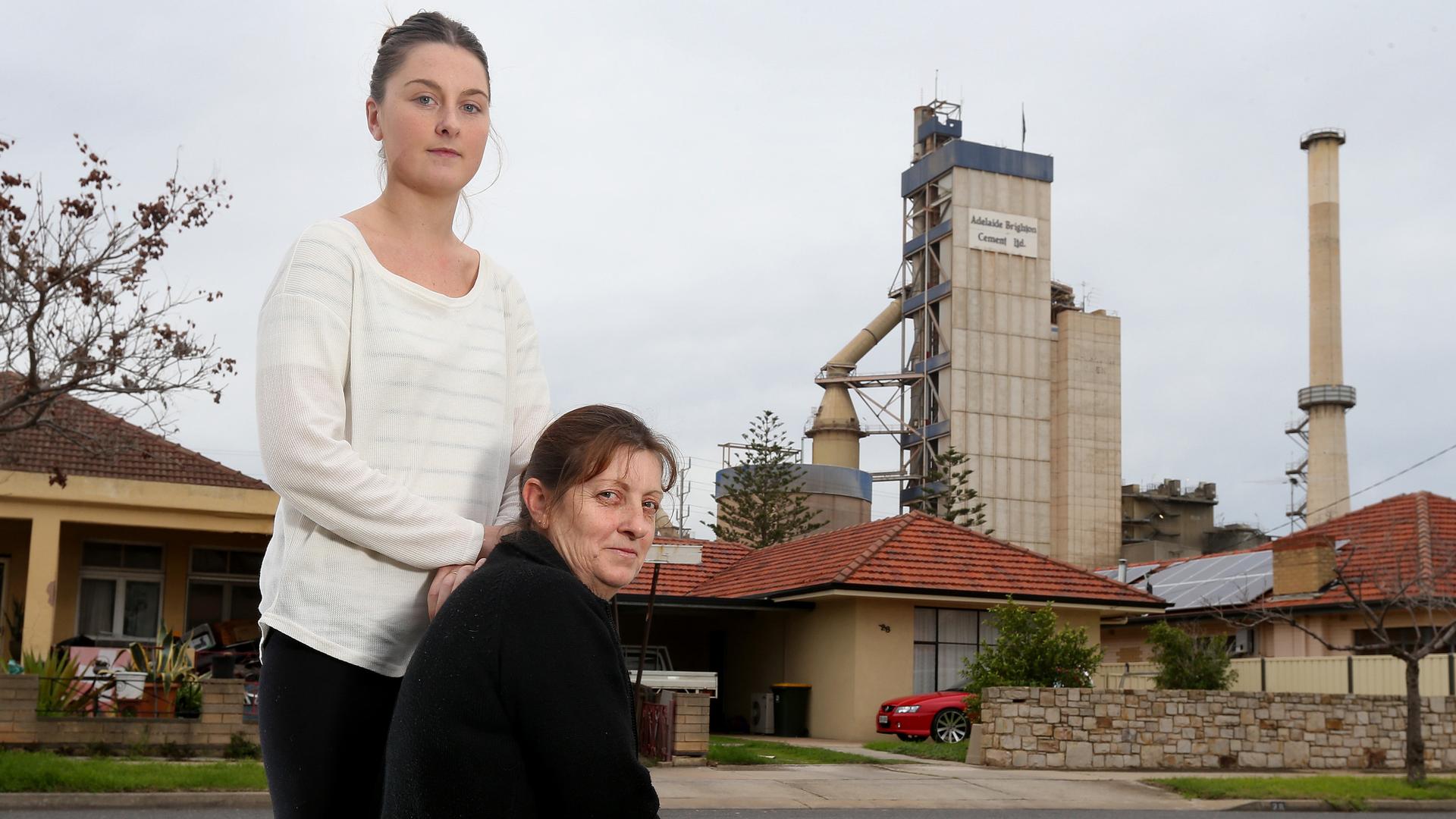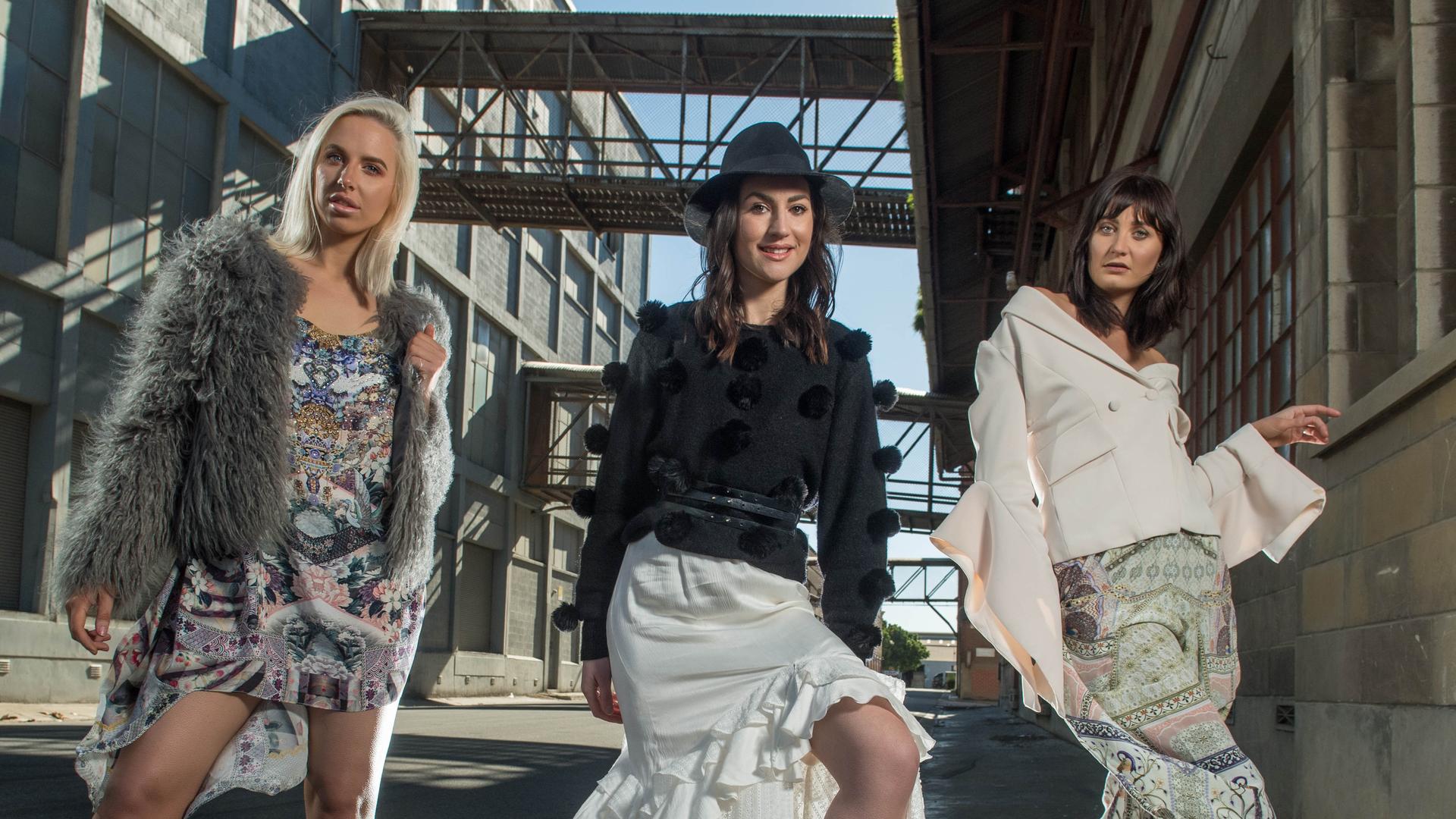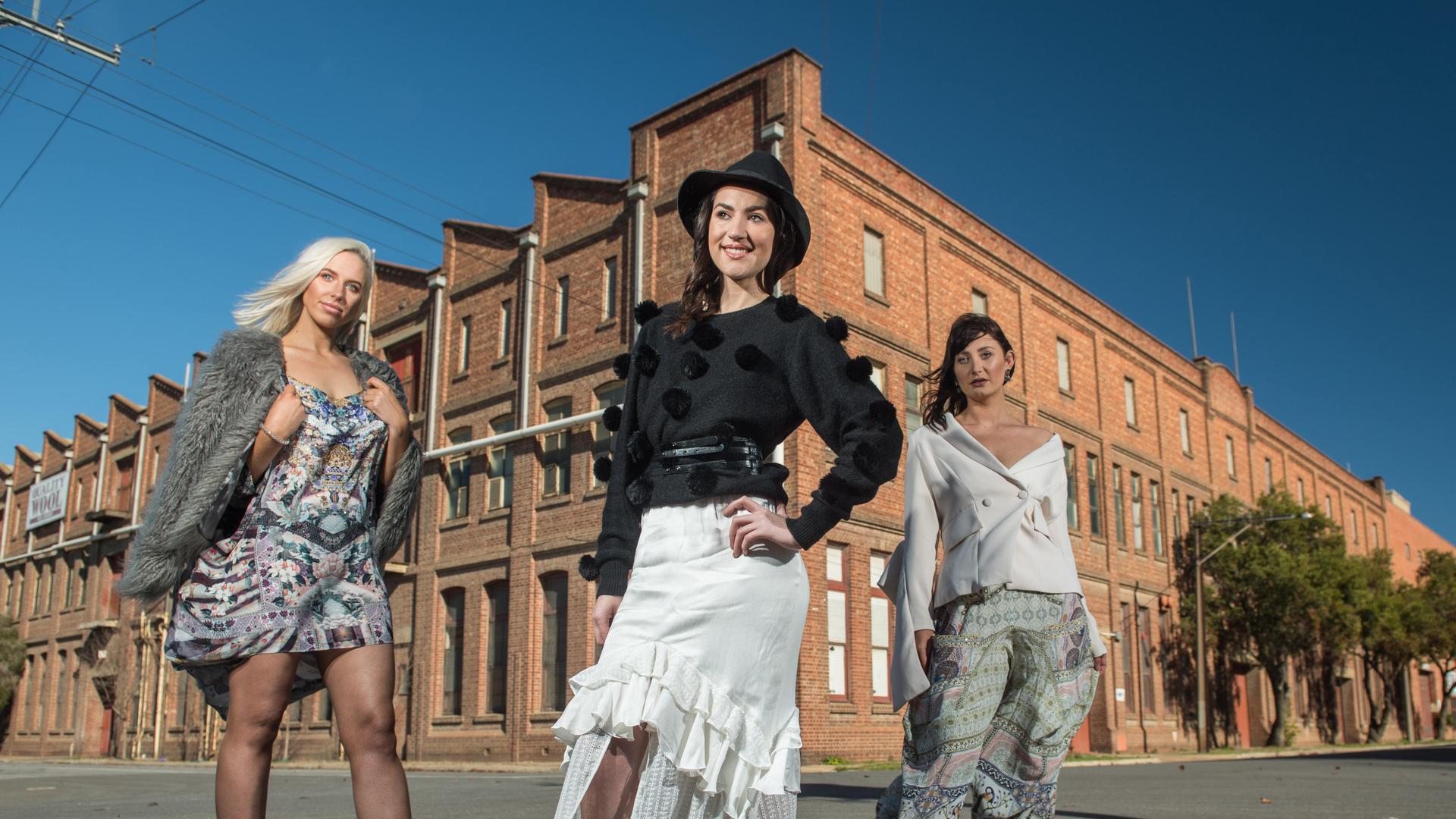A RESURGENCE is coming to Port Adelaide as the seaside city prepares to return to its heyday with the arrival of the $90 billion naval shipbuilding project — we explore what’s next in Future Adelaide.
FUTURE OF PORT’S PUBLIC TRANSPORT MAY BE IN THE PAST
HISTORIC tram carriages shuffling down the heart of Port Adelaide should be considered as part of any push to bring light rail to the area, the state’s former infrastructure chief says.
Former Department of Planning, Transport and Infrastructure chief executive Rod Hook said using the historic trams for sightseeing purposes would “add a lot of character” to the area, and should be investigated as part of any proposal to add a tram service from the city to Port Adelaide.
Trains will travel into the heart of Port Adelaide for the first time courtesy of a $16.4 million spur line, but the community and business groups are calling for further investment as the Lefevre Peninsula prepares for a resurgence powered by a $90 billion naval shipbuilding investment.
Transport Minister Stephan Knoll said a strategy for Port Adelaide was not determined beyond the spur line, but a yet to be established SA Public Transport Authority would guide the Government’s future public transport investment.
“That includes what future public transport services to and from Port Adelaide might look like,” Mr Knoll said.
Mr Hook said Port Adelaide needed “a bit of character” to succeed, and antique tram services would help to achieve it.
“There’s lots of activity building submarines and ships up the peninsula but the Port is probably a little disappointing,” he said.
“It hasn’t kicked on as expected.”
Mr Hook said the spur line was a great addition to Port Adelaide, but would “make more sense” if it was accompanied by a tram service.
Port Adelaide Enfield Mayor Gary Johanson is an enthusiastic backer of bringing light rail into Port Adelaide.
“Electrified light rail is the way to go,” Mr Johanson said.
“It’s got all the benefits of a tram but it’s fast and doesn’t emit any pollution or smells.
“My preference was always for it to go down the middle of Port Road but unfortunately the experts have said it’s best to go down the existing rail link.”
Mr Johanson said all the studies on bringing light rail to Port Adelaide had been conducted in response to Labor’s ADElink plan, which would see trams connect suburban centres to the city.
“Everything is there, the business case has been done, the studies have been done,” he said.
“The Port Adelaide Enfield Council has been commissioning such studies even before I became mayor (in 2006). All that information is there and available.”

Labor Port Adelaide MP Susan Close said the area needed some form of electrified public transport, whether it was light rail or an electrified train line.
“I want a definitive study where everyone can see the benefits and costs of each and let’s get investing,” she said.
Port Adelaide traders group spokeswoman Amanda McKinnon said a tram extension would be transformative for the area, but a lack of parking spaces was the biggest issue for locals.
“I know the council is working on it but we’re yet to see any progress,” Ms McKinnon said.
“I know of one coffee shop where they have clients who say they’ve stopped coming because they can’t get parking.”
Dr Close said the lack of parking spaces was preventing investment in Port Adelaide.
She said she knew of at least two businesses who had been interested in moving to Port Adelaide, but had been turned away by a lack of parking, for staff and customers.
“There’s a desperate need for decent parking and the council has been very slow to respond to business and customer needs,” she said.
In a detailed CityPulse report into how Adelaide lives, works and plays, professional services firm PwC found the naval shipbuilding boom presented an opportunity to further revitalise Port Adelaide but it required improvements to its infrastructure and amenities, as well as perceptions about regions like it.
TAILWALKING DOLPHINS KEY TO LOCAL TOURISM
The Port River — home to the world’s only wild tailwalking dolphins — is a critical factor in attracting more tourists to Port Adelaide, community leaders say.
Amanda McKinnon, from Port Adelaide traders group the Port Guide, said there was already “so much happening” in Port Adelaide.
Thousands of people from around Adelaide, as well as interstate and overseas, have flocked into town in recent times for the Tour Down Under — and for the Laneway Festival, Wonderwalls and Winterfest.
New eateries such as La Popular Taqueria, Michonne Reds, Whites and Bites, and the Saucy Sailor have drawn crowds to the precinct.
As have the heritage hotels, which have been brought back to life by entrepreneur locals.
The Port Admiral, the Commercial Hotel, the Lighthouse Wharf and the Port Dock have all undergone major renovations in the past couple of years.
Work is now underway on South Australian craft beer business Pirate Life Brewing’s new $10 million 250-seat brewery on Barlow St.
And the maritime, railway and aviation museums continue to be drawcards.

However, Mrs McKinnon said the Port River remains “a real untapped resource”.
“There are so many opportunities around this including more water activities, floating restaurants and the dolphins,” Mrs McKinnon said.
“We are super-lucky to have the Port River and its beautiful dolphins — head for a walk around the Anna Rennie Path and you are almost guaranteed to see one.”
Adventure Kayaking owner Phil Dodderidge — who takes 10,000 people kayaking through the Adelaide Dolphin Sanctuary and ships’ graveyard each year — agreed.
He would like to see funding for a multimillion-dollar dolphin interpretative centre — proposed by the Whale and Dolphin Conservation group — that would help visitors to learn about the dolphins through interactive displays and webcams.
“In my experience, as soon as you mention the word ‘dolphins’ you are going to get people,” Mr Dodderidge said.
“If we could get a dolphin centre that was world-class … that would bring people globally to Port Adelaide.
“I’ve had people tell me they came to Adelaide just to paddle with the dolphins.”

At the SA Maritime Museum, in Lipson St, senior curator Lindl Lawton said “play on the water” should be “a quintessential part of visiting the Port”.
“The river, its dolphins and views attract visitors but this used to be a place creaking with forests of masts — windjammers, ketches, steamers, tugs,” Ms Lawton said.
“(We) need to bring boats back to the inner harbour on a more regular basis.”
Port Adelaide Enfield mayor Gary Johanson said an “eco-tourism resort” could be developed at Torrens Island if heavy industry was “minimised” and Garden Island, which used to be a dump, cleaned up.
“How often do you see (somewhere) with all the marine life, like the dolphins, the mangroves and everything else so close to a capital city and an airport?” he said.
THE PLANT AND CONCERNS OVER AIR POLLUTION
Adelaide Brighton Cement is refusing to budge from its headquarters on the Port River as questions swirl about whether the industrial giant is compatible with the area’s forecast growth.
A company spokesman said it had “no plans to move from the site it has occupied for more than 100 years”.
Their defiance comes as Greens MP Mark Parnell said pollution from its Birkenhead plant was still a “live issue”.
Mr Parnell said the factory remaining in its current location could “put the brakes on” future high-density residential developments in Port Adelaide.
Port Adelaide is predicted to benefit substantially from the $90 billion naval shipbuilding industry, with Port Adelaide Enfield Mayor Gary Johanson hoping for a large population injection.
Mr Parnell said the risk Adelaide Brighton would move overseas if told to shift its operations meant he leant towards further urging the company to lower pollution levels, but was willing to investigate all options.
“Absolutely, it (relocating Adelaide Brighton) should be looked at,” he said.
“I’m not usually up there calling for public subsidies for private industries, but if a case can be made that they can move or clean up their act and it would be a good use of money then it should be looked at.”

Residents in the Le Fevre Peninsula have long complained about industrial pollution — with a 2014 parliamentary report confirming cases of cancer in the region are 36 per cent higher than the state average.
The report also revealed asthma rates and heart and lung complaints were higher than the state average.
Port Adelaide Residents’ Environment Protection Group spokesman Tony Bazeley said many would “like a troublesome neighbour to move after more than 30 years” but it didn’t seem likely in the near future.
“The redevelopment, if nothing else has brought increased (Environment Protection Authority) attention, but noise emissions still do not meet EPA guidelines, and dust from the plant settling on nearby residences is not covered by EPA air quality guidelines,” he said.
But Adelaide Brighton said it was continually working with the Environment Protection Authority to “identify and implement incremental improvements to the plant”,
The Birkenhead plant operates well within the particulate emission limits of the environmental protection air quality regulatory standards,” the company spokesman said.
Mr Johanson said Adelaide Brighton should not bear all blame for industrial pollution in the area and said moving its plant would diminish Port Adelaide.
“The moment the Port doesn’t have heavy industry or ships coming in it’s not a port anymore,” he said.
THE ‘MECCA’ OF FASHION
PORT Adelaide will be a mecca for fashion and the arts, Courtney Rogers says.
In early August, she will open the Port’s first haute couture fashion boutique, Miko + Mollie, on St Vincent St.
Ms Rogers will stock leading Australian labels including Camilla, Sass and Bide, Alice McCall, Stevie May, Shona Joy and Thurley.
The Port is the place to be — it is up and coming,” Ms Rogers said.
“The city is amazing but Adelaide is crying out for other great places to come alive and the Port is definitely coming alive.
“It is all about getting the right people down there and our store is going to play a big part in that.”
She said Port Adelaide already had a strong arts community and she planned to bring a “rich fashion culture” to the heritage precinct.
“Art and fashion go hand-in-hand,” she said.
“It is going to be a beautiful fashion destination for the women of Adelaide to visit.”

Ms Rogers started Miko + Mollie online 18 months ago. The boutique represents her first foray into opening a bricks and mortar store.
She has a steady clientele made up of local and international fashionistas who are eager to snap up her stylish wares.
“Australia has some of the best creative and design talent in the world,” she said.
“My business is international and I am very proud to be getting our design talent out there.”
Ms Courtney is also a proud partner of organisations such as Our Watch, which are working to reduce the rate of violence against women.
“Miko + Mollie is more than a fashion store, it’s an online community that is about empowering and uplifting women,” she says.
“It is a tremendous platform for us to reach thousands of women each and every day and make their lives better.”
Ms Rogers is not the only new addition to the Port’s arts and fashion scene — with the Port Canal Shopping Centre now undergoing a $45 million upgrade.
The main building is to be demolished and rebuilt.
This development will see the number of shops more than double, from 28 to 60.
The entire centre will then re-emerge under the new name of Port Adelaide Plaza.
New art galleries have also recently opened, including Cult & Harper, Fontanelle and Mixed Creative.
THE ‘VILLAGE’ IS GROWING
It is a “real village” living on the Port Adelaide waterfront, resident Beverley Winter says.
She and her husband Ian bought their three-bedroom townhouse on Warawee Dock, next to Dock One, 18 years ago.
After living in the country, the retired art teachers decided to move to Port Adelaide, where they have continued to create their art.
Ms Winter is a painter and Mr Winter works with ceramics. “It’s absolutely perfect for us — we’ve got the river right outside our front door and the dolphins visit on pretty much a daily basis,” Ms Winter said.
“It’s a real village, we love that we can walk everywhere. I walk around with the dog a lot and people are really friendly.
“There is a diverse range of people and you do feel like you are part of a lovely little community.”
Ms Winter said she thought it was “fabulous” that young people were increasingly moving into the Port.
“All the new younger people that are setting up are bringing a whole new vibrancy to the area,” she said.
“The thing with the Port is it struggled because it didn’t have the critical mass to support businesses.”
The Winters are about to get a lot of new neighbours now the first of 1300 homes on the Port Adelaide waterfront are underway.
Starfish Developments started work on its $168 million redevelopment of Dock One and Port Approach late last year.
In addition to building 750 homes — including apartments in the old Marine and Harbours building — an outdoor cinema, dockside piazza and central park are proposed.
Site work at Fletcher’s Slip, where Cedar Woods is planning to build another 500 homes, is expected to start in the next few months.
A masterplan for the $112 million transformation of the 12ha site will be released later this year.
A Cedar Woods spokesman said the majority of homes built would be townhouses alongside some low-rise apartments.
“The plan will also include the creation of new landscaped open spaces and upgrades to the inner harbour and waterfront to improve access and public use,” the spokesman said.
A SNAPSHOT OF THE CITY OF PORT ADELAIDE ENFIELD
■ Up to 124,731 people live in the area, stretching over 9412ha, which means there are 13.25 people per ha
■ Its gross regional product is estimated at $9.06 billion, which represents 8.9 per cent of the state’s gross state product
■ There are 8437 local businesses with manufacturing being the largest industry
■ Of the 63,137 local workers, 22.8 per cent also live in the area
■ The unemployment rate was 8.45 per cent in the 2018 March quarter
■ The median house was valued at $433,845 at June 2017 — $39,411 higher than for SA
■ In 2016, 24.4 per cent of the district’s total households were classed as low income, compared to 20.6 per cent in Greater Adelaide in 2016. Kilburn-Blair Athol had the highest proportion of low income households
■ In 2016, 74.8 per cent of households had an internet connection, compared to 79.3 per cent in Greater Adelaide
■ The $90 billion Australian Government naval shipbuilding program is estimated to create at least 8000 jobs, half of which would be based at Tech Port in Osborne
■ The deal would lead to an estimated 3.4 per cent increase in gross state product year on year, which is equivalent to the contribution the mining sector makes to the SA economy each year
Source: 2017 data from ABS, NIEIR and PwC


Add your comment to this story
To join the conversation, please log in. Don't have an account? Register
Join the conversation, you are commenting as Logout
The key to happiness: Watch the Future ADL forum
How can South Australians maintain resilience and emotional wellbeing while social distancing during a recession? Professor Nicola Spurrier joined two other experts to offer helpful guidance for our stressful lives.
SA’s golden opportunity for growth
A broadbased business collaboration will create more jobs, investment and economic opportunity for South Australia’s future.